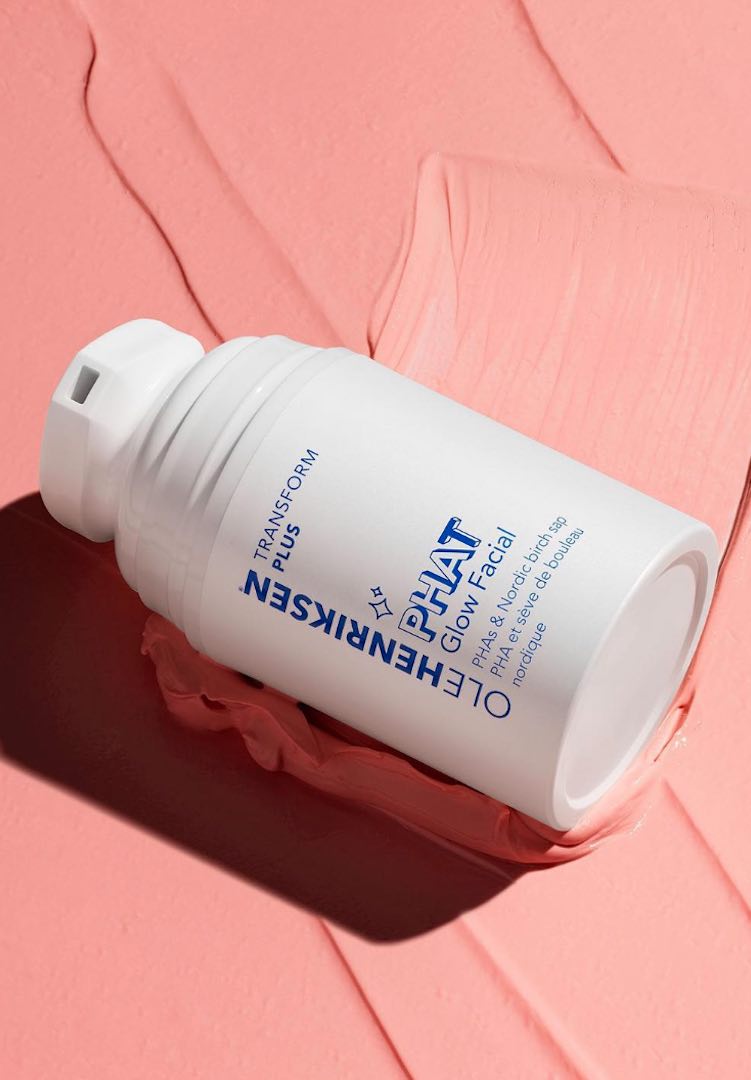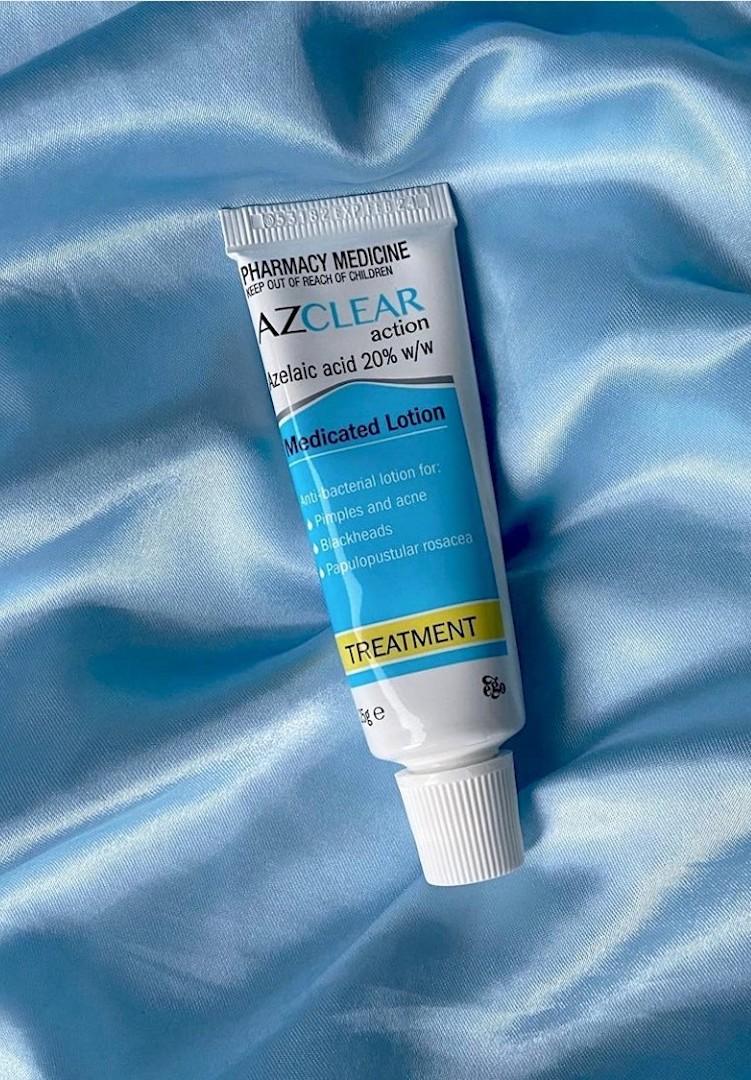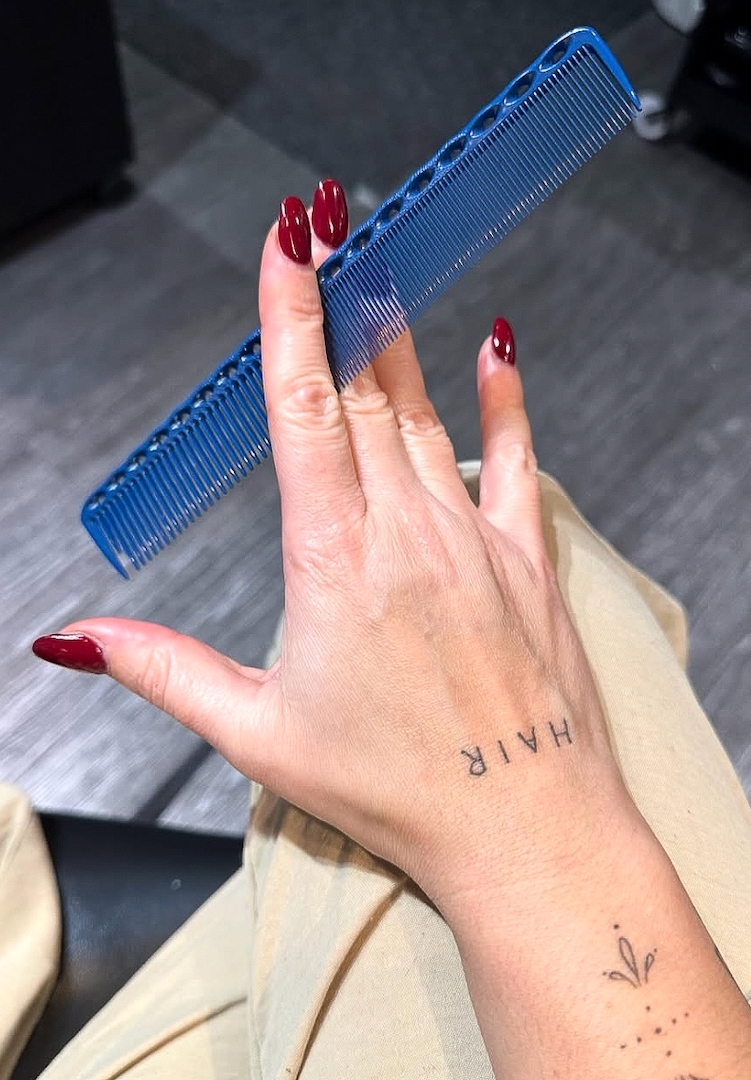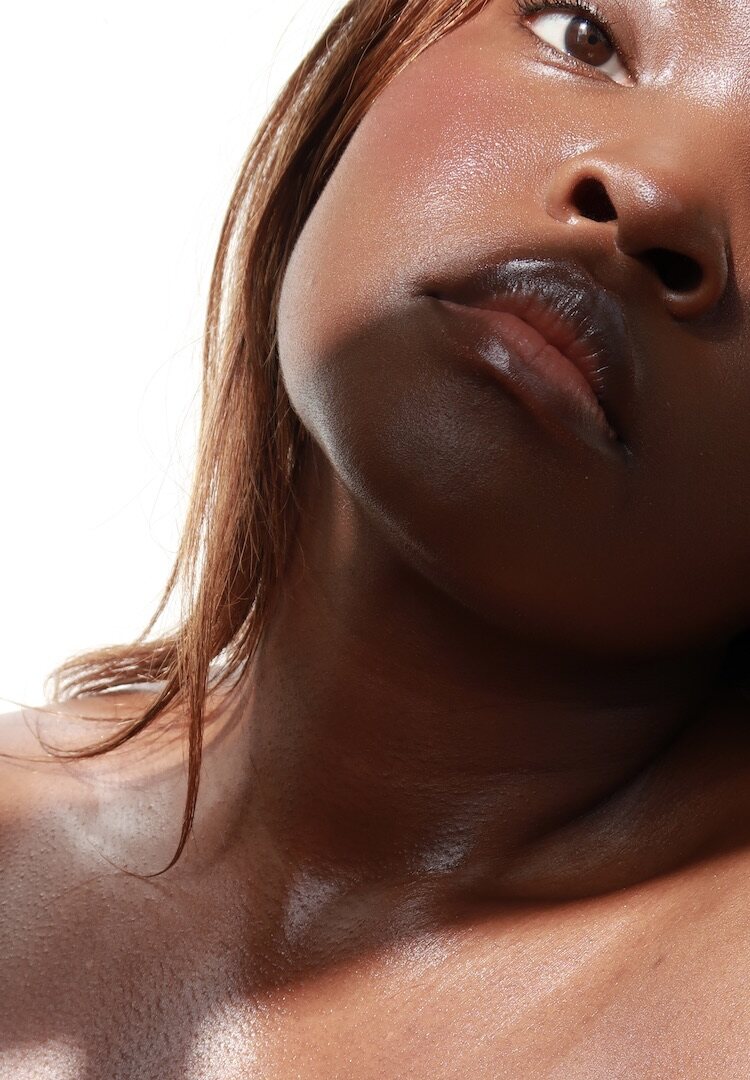An A to Z glossary of essential skincare terminology
PHOTOGRAPHY BY GRACE ELIZABETH IMAGES
Words by Matilda Anderson, Cara Briggs and Felice Lok
The low-down on ascorbic acid, peptides, kaolin, collagen and more.
Learning how to take care of your skin can be a complex journey filled with trial and error. Walking into a cosmetics store or chemist filled with wall-to-wall products can be overwhelming – and that’s before you even start reading the ingredients
Our eyes move past ‘Aqua (enter long scientific term here)’ and we enter the foreign territory, often ill-equipped to understand the long and convoluted language of beauty. It’s not just ingredients – social media is filled with endless skincare jargon. Seriously, what is Coenzyme Q10?
We like nosy people. Don’t be shy, head to our Beauty section for more.
But once you’ve deciphered the basics of skincare terminology, you can better understand which products – cleansers, moisturisers, oils, masks and more – will be right for your skin. Below, find a glossary of the common skincare terms you should know.
Adenosine
Adenosine is a naturally derived, water-soluble ingredient used for its anti-aging properties. It functions to soothe and restore the skin, with anti-inflammatory and anti-wrinkle properties. Found naturally within our skin, adenosine-rich skincare products can directly connect with our cell receptors for increased effectiveness.
Ascorbic acid
The technical name for vitamin C, ascorbic acid or L-ascorbic acid is a naturally-occurring antioxidant widely found in nature. It’s been proven to be effective in reducing discolouration and wrinkles and is known to increase the effectiveness of SPF products.
Alpha hydroxy acid
Often abbreviated to AHAs, alpha hydroxy acid refers to a group of plant-derived acids which help to break down surface dead skin cells. Commonly known AHAs are glycolic acid and lactic acid. Its exfoliating properties help to improve dry skin, signs of ageing and hyperpigmentation by increasing cell turnover.
Aloe barbadensis
Also known as aloe vera, aloe barbadensis is a plant extract that helps to soothe, cool and hydrate the skin. Often used as a topical gel or as an additional ingredient, its antioxidant properties can help reduce inflammation and treat burns, dry skin and acne.
Amino acids
Amino acids are our body’s protein-building blocks that help (among other things) in maintaining the skin’s hydration, plumpness and collagen regeneration. They occur naturally within the skin barrier and applying them topically helps to improve our skin’s defence against environmental stresses.
Argan 0il
Argan oil is a non-fragrant plant oil produced from the kernels of argan trees. It can be found in skincare and hair products as a good source of vitamin E, omega fatty acids and linolenic acids. It’s commonly used for dry skin and hair and may cause greasiness if used excessively (like most other oils).
Azelaic acid
Azelaic acid is a natural acid found in grains like barley and wheat. Typically used to treat acne, azelaic acid works to decongest and refine the skin’s texture. As an antioxidant, it helps to reduce post-inflammatory pigmentation or post-breakout marks.
Beta hydroxy acid (BHA)
Closely related to AHAs, beta hydroxy acids are oil-soluble acids that penetrate the lining of pores to dissolve oil and reduce the size of pores and blemishes. They also work to remove dead skin cells to improve the texture of the skin (a commonly known BHA is salicylic acid). Their ability to dissolve oil makes them suitable for those with blemish-prone skin.
Benzoyl peroxide
Benzoyl peroxide works to reduce blemishes by releasing oxygen and killing bacteria when it comes in contact with the skin. Working as an antiseptic, it’s absorbed directly by the skin into the pores. By reducing acne-causing bacteria, it helps to prevent future breakouts and redness.
Butylene glycol
Butylene glycol is water-soluble organic alcohol that’s used to condition, smooth or function as a solvent to separate ingredients within products. You can find it in all kinds of beauty products as a less-controversial substitute for propylene glycol.
Cannabidiol (CBD)
Cannabidiol (CBD) is a chemical derived from the Cannabis Sativa plant. It’s often used to create CBD oil, a fast-growing ingredient on the skincare market. As it has anti-inflammatory and soothing properties, CBD oil is commonly used to address acne, dry and itchy skin and infections.
Ceramides
Ceramides are natural lipids (oils) that make up the outer layer of skin. They help with balance, hydration and protection of the skin. While they are naturally produced in the skin, they’re used in skin care products to make up for the decrease of ceramides as we age. Ceramides can be combined with AHA or BHA exfoliants for extra absorption.
Chemical exfoliant
Exfoliation is essential to removing old skin cells and promoting the growth of new and healthier ones. A chemical exfoliant reduces abrasion by enabling the skin to be gently shed in a deeper, more controlled way. It also helps with anti-ageing, managing acne and evening skin complexion. AHA and BHA are two common types of chemical exfoliants.
Citric acid
As the name suggests, citric acid is a naturally-produced acid from citrus fruits. It’s an AHA used in skin care to brighten and even out skin tone. It also contributes to anti-ageing by promoting hydration and thickening the skin to reduce fine lines.
Coenzyme Q10 (Ubiquinone)
Coenzyme Q10 (CoQ10) is an antioxidant that acts as a shield against common aging factors (UV radiation, pollution and other environmental stressors). CoQ10 can be directly applied to the skin to promote antioxidant protection, increase moisture and even skin tone.
Collagen
Collagen is a type of protein found in skin, muscles, tendons and bones, which helps bind cells together. It’s widely discussed in skincare because of its renowned benefits in maintaining skin elasticity, hydration and general youthfulness. Collagen production can be increased through the use of AHAs and peptide-rich products.
Comedogenic
Put simply, comedogenic means ‘pore-clogging’. It’s a way to describe the group of ingredients that cause product acne (small white bumps on the skin). You generally want to look for non-comedogenic products (check your ingredients!).
Dihydroxyacetone (DHA)
Dihydroxyacetone is a simple carbohydrate often used as a pigment in sunless tanning products. Currently, it’s the only active ingredient approved by the FDA for sunless tanning. The chemical reaction it causes with the amino acids on the surface cells of the skin produces a darkening effect. DHA does not damage skin, as it only affects the outermost cells of the epidermis.
Emollient
An emollient is one of the active ingredients in moisturises and the medical term for very simple, fragrance-free hydrating treatments. Emollients come in an ointment, cream and lotion form; working by creating a barrier that locks in the water content of your skin. They’re often used by those with extra-dry skin or conditions like eczema, psoriasis and dermatitis.
Emulsifier
Emulsifiers help to combine the ingredients in skincare would normally separate – like oil and water. This helps create a smooth consistency in products and can penetrate vitamins and antioxidants deeper into the skin layer.
Glycolic acid
Glycolic acid is a gentle chemical exfoliant naturally found in plants like sugarcane and beetroot. It dissolves oils and dead skin cells without leaving the abrasions that can come from using a scrub or external exfoliator. It can be used to treat a range of issues including UV damage, warts, acne, wrinkles and hyperpigmentation.
Hyaluronic acid (HA)
Hyaluronic acid is a humectant, meaning it attracts and retains moisture. HA naturally occurs within the body but decreases with age, causing a lack of plumpness, vitality and hydration. HA works by seeping into the skin – the smaller the molecule, the further it will penetrate. For the best results, look for moisturisers with differing molecular sizes.
Jojoba oil
Derived from the wax of jojoba seeds, jojoba 0il is good for those with sensitive skin. It can also be used in the hair to protect split ends. The oil has been proven to enhance the absorption of topical drugs, possess anti-inflammatory effects, and naturally contain the antioxidant vitamin E.
Kaolin
Kaolin is a natural clay mineral (also known as white clay or China clay) that’s perfect for those with oily skin. With absorbent, mattifying properties, kaolin commonly appears in face masks or as a clarifying ingredient. It’s recommended kaolin be used anywhere from one to four times a week, depending on dryness levels.
Kinetin
Kinetin is a compound derived from plants, used in skincare for its anti-aging and moisturising properties It can be especially useful in treating mottled hyperpigmentation and improving skin texture and colour.
Kojic acid
Made from various types of fungi, you’ll often find kojic acid in fermented foods like soy sauce and rice wine. The naturally derived acid is also used in skincare to treat sun damage, age spots and hyperpigmentation. Use in conjunction with glycolic acid for a glowy complexion.
Lactic acid
Lactic acid is a type of gentle AHA that works by breaking down materials binding dead skin together so it can loosen and naturally shed. It can also help with skin discolouration, hydration and firming.
Micellar water
Micellar water is made of water (duh) and suspended surfactant molecules, which naturally attract dirt and oil. When enough surfactants are suspended in water they cluster together, making a micelle. When poured onto a cotton pad and applied to the face, micelles attract makeup and dirt for gentle, hydrating removal. While they’re great at removing stubborn makeup and grime, micellar waters should be used in conjunction with a regular cleanser to avoid clogging pores.
Niacinamide
Niacinamide is a form of vitamin B (an antioxidant) found in supplements, beauty and food products. It’s a key ingredient used in skincare to treat acne, rosacea and other inflammatory skin issues. It can also help with redness, skin elasticity and cell repair.
Parabens
You’ve probably seen the label ‘paraben-free’ on skin and hair care products and thought to yourself, ‘Great! I don’t know what that means but it must be good’. You’d be half right. There are conflicting points of view when it comes to parabens, which are artificial preservatives that help to extend the life of beauty products.
Research has shown that parabens don’t just remain on the skin’s outermost layer but can seep into your bodily tissue. This is speculated to cause a range of issues including allergies, sensitivities and increased oestrogen leading to infertility and cancer. They’re also bad for the environment, harming marine life.
However, the percentage of parabens in skin and hair products is usually very small. Labelling products as ‘paraben-free’ can be used as a kind of beauty greenwashing, so do your research. Check out options and decide what feels right for you.
Peptides
Peptides are amino acids used for anti-aging and treating skin regeneration; assisting in keratin, elastin and collagen production. They should be paired with complimentary ingredients like hyaluronic acid, niacinamide and vitamin C for the best effects.
Retinol
Retinol is a derivative of vitamin A available over-the-counter in the form of serums, topical treatments and creams. It’s been proven effective in aiding wrinkles, fine lines, texture and cell turnover. It’s best to start slow with retinol and take your time to figure out the one that’s right for you. Always use it in conjunction with a good moisturiser and SPF.
Squalane
Squalane is a kind of naturally-occurring emollient (see above) that works to repair skin barriers, deeply hydrate and smooth texture. Its fatty molecules help to seal in moisture and prevent inflammation.
Vampire facial
A vampire facial is a blood-based cosmetic procedure that utilises micro-needling and platelet-rich plasma to stimulate collagen production. The process involves pricking the skin with tiny needles, drawing blood and triggering the body’s wound-healing process (for collagen goodness).
Zinc oxide
A widely-used acne treatment, zinc is an essential nutrient and trace mineral that works as an antibacterial and anti-inflammatory ingredient. It’s also used to treat rosacea, eczema and melasma.
For more on decoding beauty products, head here.













